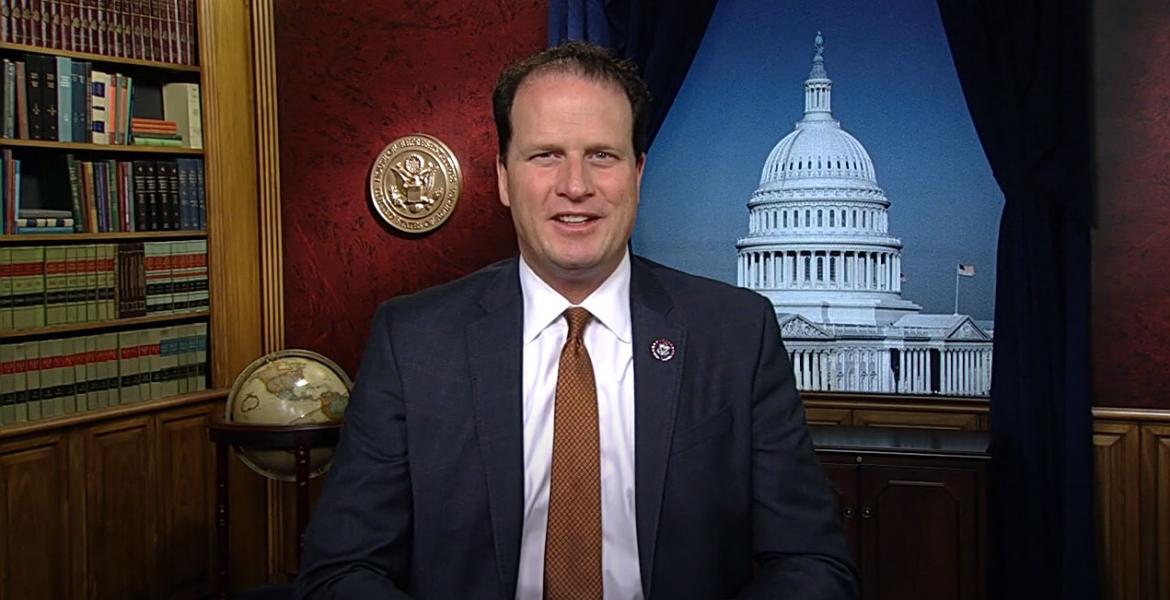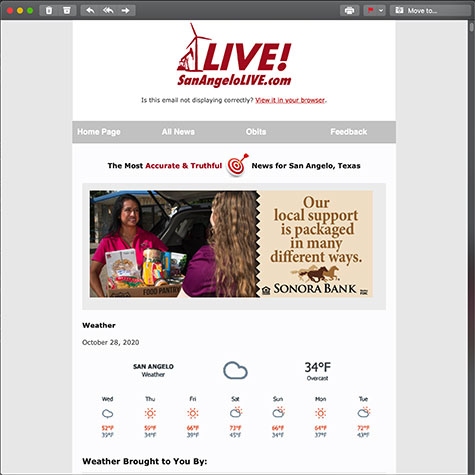By Ayden Runnels, The Texas Tribune

SAN ANTONIO, TX — At the intersection of North Main Avenue and West Evergreen Street just north of downtown San Antonio, semi-faded rainbows connect each street corner in place of standard, white crosswalks.
The intersection is located at the center of the city’s “gay strip,” a cluster of blocks long known as a home to San Antonio’s LGBTQ+ residents. City officials designated the area as the “Pride Cultural Heritage District” in June, seven years after the rainbow crosswalk was laid down.
But the colors that pave the four-way intersection may soon be erased, as San Antonio and other Texas cities face a Friday deadline to decide whether to remove their queer-themed crosswalks or lose millions in state funding. The crackdown came at the behest of Gov. Greg Abbott, who directed the Texas Department of Transportation in early October to make sure cities and counties remove roadway art displays that “advance political agendas” and “ideologies,” in the name of enhancing safety by limiting distractions.
Abbott’s office declined to answer questions about the order, directing the Tribune to the governor’s Oct. 8 press release announcing the clampdown.
That same day, TxDOT sent a letter to local transportation officials mandating the removal of “non-standard” road markings within 30 days. State standards require crosswalks to be composed solely of white lines that meet certain specifications.
Advocates and local officials have said the order is not about safety, but is rather a political move designed to strip away emblems commemorating areas with significant LGBTQ+ community or history.
“There's nothing illegal about this crosswalk,” Pride San Antonio executive James Poindexter said. “There's nothing political about it. The politics is in [Abbott’s] brain only.”
Poindexter and others in San Antonio are adamant they can win a legal battle against Abbott and come away with both the crosswalks and their funding — even as other cities have complied with the removal order, citing the risk of losing millions of transportation dollars. Last week, members of the community gathered to protest the San Antonio crosswalk’s potential removal while celebrating the installation of a new plaque at the intersection that honors the area’s’s new designation as a heritage district.

After the state directive came down, Pride San Antonio officials immediately got in touch with the city manager and other city officials to make the case for fighting back, Poindexter said.
San Antonio Mayor Gina Ortiz Jones, however, appears reluctant to push back against the order, saying in a statement to the Tribune that she believes the best way to honor the LGBTQ+ community is to find ways beyond the crosswalk to honor their role in the city’s story.
“We must be smart, realistic and effective, not just idealistic,” Jones, the city’s first openly gay mayor, said in her statement. “My pride isn’t tied to a crosswalk; it’s in the people and progress of San Antonio.”
Jones did not definitively state whether the city would remove the crosswalk art, but said she doubted an exception would be granted by the state. She also appeared at last week’s protest and told attendees she didn’t want to invite “unneeded retribution.”
Poindexter said Jones’ response and that of other cities’ leaders validates what he characterized as overreach by state and federal officials into local decisions.
“This is why bullies become powerful — because nobody stands up to them,” Poindexter said. “This is why this mentality has ripped across our nation, from the federal level down to the state level.”
The state’s order to remove the crosswalks follows a similar request federal Transportation Secretary Sean Duffy made in July as part of a new initiative designed to decrease accidents on non-freeway roads. Duffy decried political symbols on public roadways in a press release announcing the initiative, though in a separate letter calling for states to participate, he did not mention political messaging, instead broadly directing officials to enforce proper roadway markings.
“Under Secretary Duffy’s leadership the department is getting back to basics and enforcing the rules already on the books — roads are for safety not political messages or artwork,” a Federal Highway Administration spokesperson said in a statement.
Like San Antonio, several of Texas’ largest cities have rainbow crosswalks at the heart of neighborhoods historically nurturing of the state’s LGBTQ+ population. The rainbows are found in the “gayborhood” of Montrose in Houston and in Dallas’ Oak Lawn, where the Texas Historical Commission has recognized the area’s LGBTQ+ history as a cultural contribution to the state.
Most of the crosswalk installations have been partially or wholly funded by private interests or donations rather than city funds. Poindexter said community organizers paid for roughly two-thirds of the installation costs in San Antonio, and have volunteered and paid for regular cleanings and upkeep.

In the October letter to local transportation officials, TxDOT’s executive director, Marc Williams, noted that cities and counties could request exceptions “based on a demonstrated public safety benefit or compelling justification.” TxDOT and Abbott’s office did not respond to questions about what would constitute an exception.
Cities have taken varied steps to respond: Houston almost immediately removed its crosswalk in Montrose days after TxDOT threatened its funding. The city had just repaved the rainbows onto the street days earlier.
Austin Mayor Kirk Watson said the city would comply and remove its rainbow crosswalk at 4th and Colorado streets to avoid jeopardizing funding. The city’s director of public works also sent a letter to city officials last week listing several other intersections — most of which were not rainbow crosswalks — that city staff would look at to determine whether they complied with the state directive.
The fate of the crosswalk at Cedar Springs and Throckmorton Street in Dallas, the centerpiece of the historic “Crossroads” in Oak Lawn, is still unclear. The site of Texas’ first pride parade is marked by both the crosswalk and an official Texas Historical Commission plaque.
A spokesperson for the city of Dallas said city council members would receive updates on any “necessary” steps taken in response to TxDOT’s letter. Advocates in Dallas are encouraging city officials to apply for an exception, but acknowledged they face slim chances of success.
“Do we want to save the crosswalks? Absolutely. Do we know that that's an uphill battle in this state with this governor? Absolutely, but it's a bigger issue than that,” Dallas Way director Steve Atkinson said.
San Antonio officials plan to apply for an exception for the crosswalk at North Main and West Evergreen. First Assistant City Attorney Elizabeth Provencio said during a recent meeting of the city’s LGBTQ+ advisory board that the city has data proving there have been fewer accidents at the intersection since the crosswalk was painted.
Several members of the advisory board said they are prepared to start a larger fight to preserve the crosswalk after the expected failure of the exception request.
“We are being attacked at every front: from how we express ourselves, from how we seek health care and how we work in the workplace,” said Maria Salazar, chair of the San Antonio LGBTQ+ advisory board, during its Oct. 20 meeting.

San Antonio is counting on $2.3 million in state and federal transportation grants for the 2026 fiscal year, according to the annual budget approved by City Council last month.
Cities without rainbow crosswalks have also been swept into removing community artwork from their intersections. In Kerrville, city officials are planning to remove three blue and teal pieces of crosswalk art representing the Guadalupe River to comply with the order, according to a city spokesperson.
“While it’s unfortunate, we will have a letter to TxDOT on or before mid-November about a plan to have any crosswalk art removed,” Kerrville Assistant City Manager Michael Hornes said in a statement. “I don’t see how our color scheme would fit any of the exceptions.”
San Marcos also said in a statement that it would file exception requests for some of its street art, none of which are rainbow crosswalks.
San Antonio officials indicated during last month’s LGBTQ+ advisory board meeting they would file their exception request on Friday.
Whether or not the city’s colorful crosswalk remains, Jones said San Antonio officials are working on a plan to “reimagine” the city’s pride cultural heritage district to better celebrate its queer community. Those changes would be decided after the city issues a report on the district and solicits feedback from various elected officials in the area.
This article first appeared on The Texas Tribune.
Subscribe to the LIVE! Daily
Required






Post a comment to this article here: